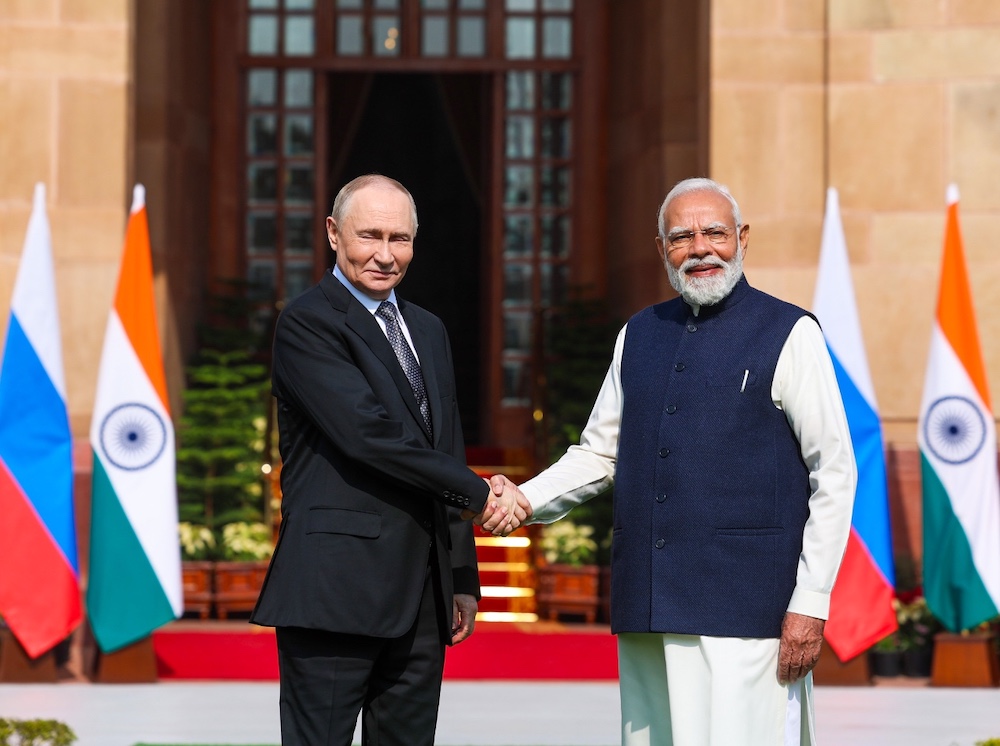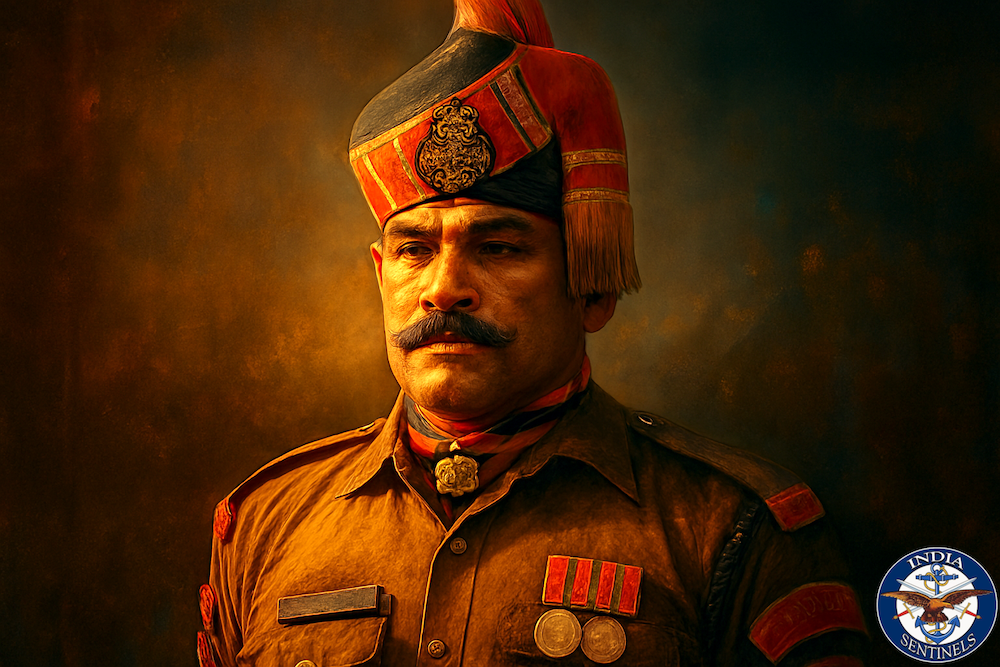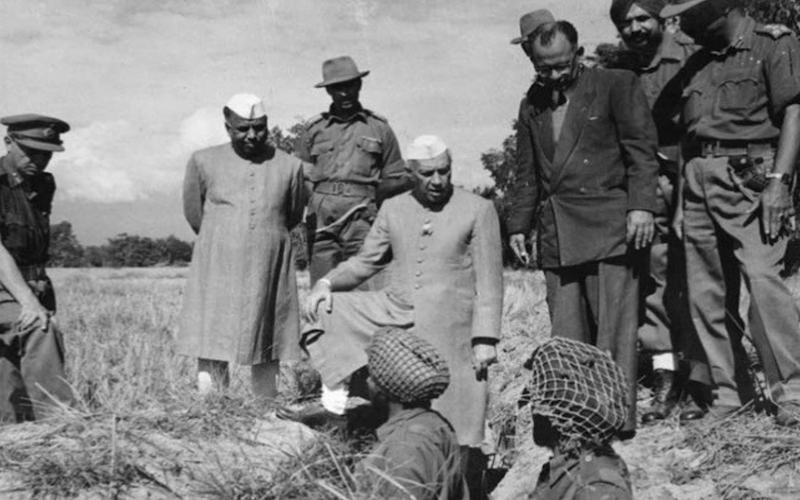 Prime Minister Jawaharlal Nehru with troops at a forward position during the 1962 India-China war.
Prime Minister Jawaharlal Nehru with troops at a forward position during the 1962 India-China war.
Dissecting Claude Arpi’s 1962 India-China war claims
During my studies on the hitherto obscure aspects of the 1962 India-China war, particularly with reference to the Tawang sector in North-East Frontier Agency (Nefa), I have come across a lot of myths and falsehoods based on hearsay or pure fantasy regarding the conflict.
I have tried to rectify the gross inaccuracies and mythmaking on this particular aspect of India’s military history through my longread here on India Sentinels, a slightly different version of which was published as a book – “The 1962 India China War: What they don’t want you to Know” – in October 2022. However, the legacy of mythmaking persists.
Recently, I came across a March 18, 2014, blogpost by Claude Arpi, a reputed China expert, titled “How Nehru’s proteges messed it up”.
[Here is the archived link of Claude Apri’s original blogpost.]
In India, Arpi has been long considered to be a “domain specialist” on the 1962 India-China war, and all matters regarding the India-China border disputes, including the larger strategic aspects of this relationship.
I held Arpi in high esteem and, like many, referred to his blogposts, articles, and archives to gain deeper insight to issues related to the military and strategic aspects of the ties between Beijing and New Delhi. However, while perusing this blogpost, I was stunned to find a host of inaccuracies and misrepresentations on the Namka-chu episode (culminating in the Battle of Namka-chu).
Since this name carries a lot of weight in India’s military history circles, particularly with reference to China ties, I found it imperative to put the account straight.
***
In his blogpost, Calude Arpi surmises:
“Two years ago, I wrote an article on the Henderson Brooks Report (HBR) for the Indian Defence Review (Issue Vol. 27.2 April-June 2012). The title was ‘Why the Henderson-Brooks report has never been released!’
My conclusion was that one of the reasons for the famous report, written by the Anglo-Indian General Henderson Brooks, not to be released by the Government of India, was that in the early months of 1962, the Army Headquarters had some doubts about where the frontier with Tibet was.
Under political pressure, they nevertheless foolishly went ahead and established a post at Dhola near the disputed Thag-la ridge. It was the perfect excuse for the People’s Liberation Army to go to war against an unprepared India [Emphasis mine].”
Next, he goes further in his condemnation of his “targets”. He writes:
“This explains that the Government of India was not keen to show that the 4 [IV] Corps commander (earlier chief of general staff in the Army Headquarters), Lieutenant General BM Kaul, a special appointee (and protégé) of Prime Minister Nehru, was not only unsure where the frontier with Tibet was, but took the risk to set up a post in a place which could be north of the border [Emphasis mine]. The prime minister was too busy solving the problems of the world to look into these ‘small’ details.
But it was enough for China to have a pretext to attack India a few months later (October 20, 1962). The rest is (sad) history [Emphasis mine].
Today, we know the guilty men of 1962. It is a step forward for the nation.”
He then quotes excerpts from the HBR, which make his own thesis a non-sequitur, as readers will see for themselves, below:
Contrary to Arpi’s scurrilous accusations, the documents indicate:
- The Army Headquarters (AHQ) had nothing to do with the specific location of the Dhola post. (HBR quote given below *1).
- Chinese incursions had been reported west of Khinzemane (Arpi got his basic directions wrong when he said “from Khinzemane to the Bhutan-Tibet-India tri-junction to its east”), across the McMahon Line (MML), in 1961.
- The AHQ logically instructed the Eastern Command to patrol the MML in this area and set up posts on or behind the line without the need to seek sanction for the same. The stance of AHQ prior to these incursions was diametrically different and rather conservative! We are giving below the two relevant excerpts from the HBR (Henderson Brooks Report) which Arpi claims to quote.
- The political leadership had even less to do with the specific location of this post. (Relevant portion from the HBR on the contents of the original Forward Policy is given below.)
- Captain Mahabir Prasad, of 1 Sikh was sent on a patrol to the general area of the MML and India-Bhutan-Tibet trijunction, for setting up a post to be manned by the Assam Rifles. He alone was responsible for the specific location of the post. (His reasons and relevant information on the Dhola Post are given below).
- Brigadier John Dalvi, commander, 7 Infantry Brigade claims credit for briefing Capt Prasad on the patrol sent to set up the post and his other tasks. (Excerpt has been provided below from Brig Dalvi’s book – “Himalayan Blunder”, which is written on this subject.
Lt Gen BM Kaul, who took over command of the newly created IV Corps only in October 1962, had absolutely nothing to do with the location of the Dhola Post.
*1. HBR – Indian Army’s stance in Nefa on the Tibetan border prior to 1962:
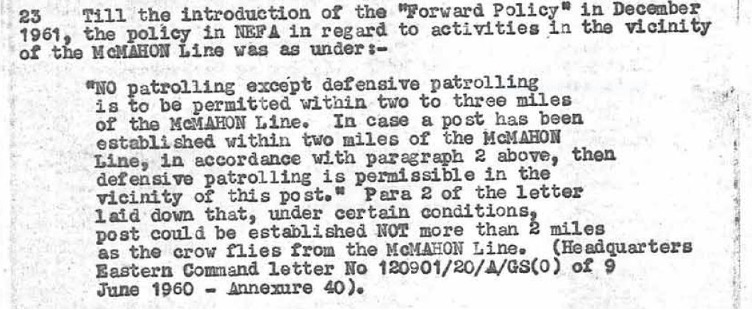 2. HBR – Eastern Command alerting AHQ on Chinese intrusions across McMahonLine in 1961 and requesting permission to patrol the area:
2. HBR – Eastern Command alerting AHQ on Chinese intrusions across McMahonLine in 1961 and requesting permission to patrol the area:

3. HBR – AHQ’s order on patrolling and setting up posts on or near McMahon Line in the Khinzemane-Niyamjung-chu-Namka-chu area since April 1962:

4. HBR – GOI’s original Forward Policy. Do note the absence of any mention of Nefa, apart from the emphasis on providing for adequate logistic and operational bases:
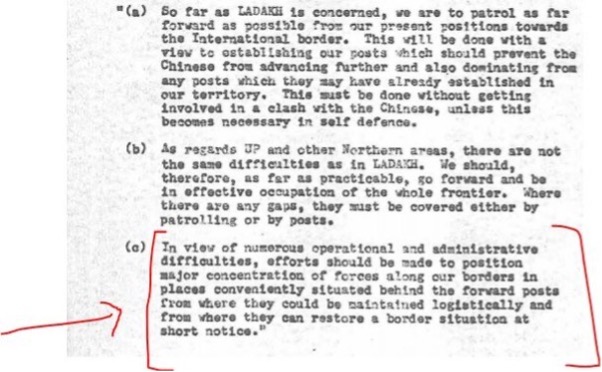
5. Brig John Dalvi’s claim on briefing Capt Mahabir Prasad about the tasks of his patrol, including the setting up of a post (from “Himalayan Blunder”, page 137):
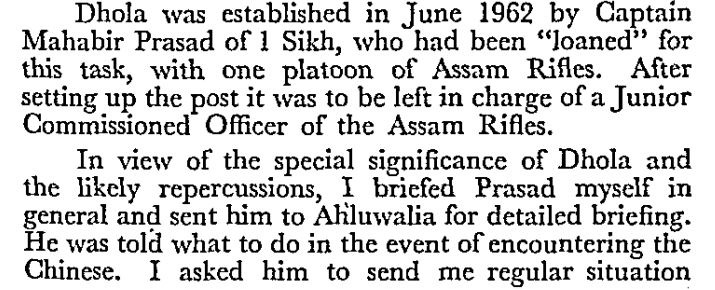
As we can see, according to documentary evidence, it is clear that the setting up of the Dhola post, in essence, was a purely military decision taken keeping in mind the developing situation at the border. The local command felt the need and requested permission from the AHQ, which was subsequently granted. Wide latitude was given to the local command to set up the post as the local conditions allowed. And Dhola post’s location at that particular place was a purely tactical-level decision of a patrol leader.
Why Capt Prasad took that decision and the circumstances around it have been discussed at length in two video interviews we took. First with Brigadier Inderjeet Singh Gakhal “Injo” Gakhal (retired) of 1 Sikh, who takes interest in the history of his unit (), and then, with Major General Krishen “Krish” Khorana, who succeeded Capt Prasad as the adjutant of 1 Sikh, when the latter was deputed to the 1/9 Gorkha Rifles unit during the Namka-chu operations. He was a colleague and friend of Capt Prasad, and fought in the Tawang sector on the Bumla axis.
[Link to video interview of Brig Gakhal | Link to video interview of Maj Gen Khorana]
Thus, as readers can see here, Claude Arpi, unfortunately, sensationalized and politicized the events, in line with the long tradition of mythmaking on the 1962 war.
It is pertinent to mention that institutions, including the military of all countries, make mistakes at all levels. As do political establishments. Honest historical analyses focus on the factual train of events, decisions, and actions. Only through this rigour can the correct lessons be drawn and used by future generations.
Claude Arpi has alluded to the following message from the local XXXIII Corps, which was responsible for the Tawang sector until September 1962, to the higher command:
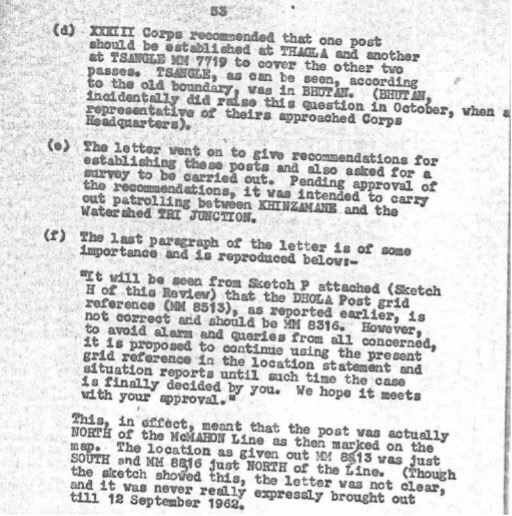
Readers who have watched the videos of the interviews with the two officers of 1 Sikh, links of which are shared above, would know that setting up a post at Thag-la would have made poor military sense. It was even more vulnerable than the ill-fated Dhola post – being nine miles further ahead over a difficult and steep track. It also had a river obstacle across the route and mountain passes on its left flank, through which it could have been cut off and isolated.
What is even more noteworthy is that the XXXIII Corps having become aware of the disagreements on the setting up of a post across the MML was suggesting that the subterfuge be, knowingly, continued! Mind you, this was not a public document, but an internal, secret military correspondence. Therefore, there was no alibi of international image at all.
It was a question of misguiding the military and political hierarchy on the prudent course of action.
I personally feel that from the point of view of long-term national interest, regardless of the alignment of the MML on the 1914 map, the Indian Army and Intelligence Bureau was correct in wanting to hold the Thag-la ridgeline as the international border. The MML, according to the 1914 map, leaves all the tactically commanding heights and features on the Tibetan side. This made the military situation untenable in the entire Zemithang circle for India.
Point to be noted is, if India had conceded to the Chinese demand of taking the MML sticking to the version on the map, then in any subsequent military conflict, India would stand to lose the entire Niyamjung-chu valley upto the Shakti bridge.
This would have inherently jeopardized the defence of Tawang.
Approximate depiction of the McMahon Line as on the 1914 map (red line) and India’s claim line (in yellow), in the sector under discussion:
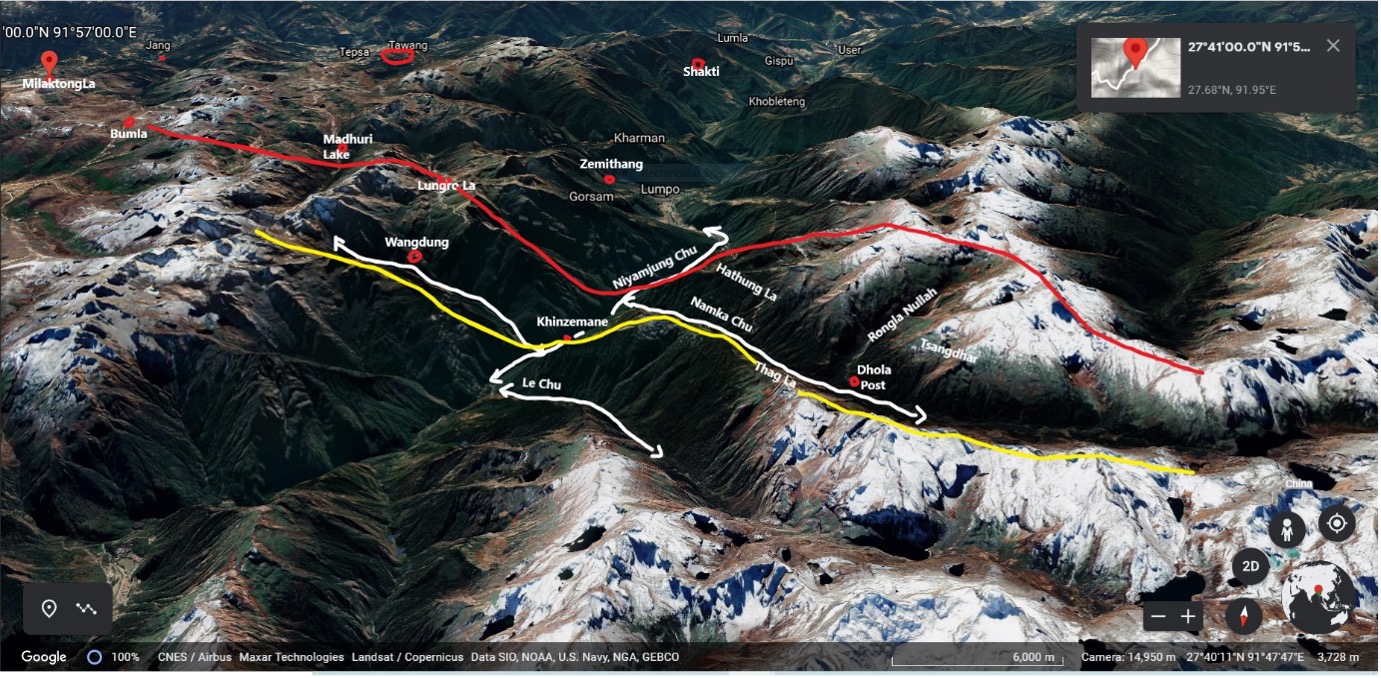
Readers should note here that there is no documentary evidence of any political directions about specific locations of border posts in Nefa, including the Tawang sector. As we have seen earlier, the AHQ didn’t give any specific directions. It left the decision-making to the discretion of the local command.
We have also seen that Brig Dalvi, who was the local formation commander of 7 Infantry Brigade, is on record claiming the credit for briefing Capt Prasad about his patrolling tasks, which had been sent out to set up the post. By now, readers would have heard from the two officers, in the two abovementioned videos, what Capt Prasad’s views were on the subject. They can judge for themselves the rationale that drove Claude Arpi to make his outrageous claims in the quoted blogpost.
Let’s now come to Arpi’s last point, which some might call his piece de resistance.
Arpi writes:
“But it was enough for China to have a pretext to attack India a few months later (October 20, 1962). The rest is (sad) history [Emphasis mine].”
I would like to categorically state that this is historically untrue. The setting up of the Dhola post was not the casus belli triggering the Chinese attack on October 20, 1962.
Claude Arpi’s narrative on this “pretext to attack India issue” is based on surprisingly uninformed premises. “Surprising” is a euphemism I use deliberately, in view of his otherwise exalted stature and my respect for his work hitherto.
It has been widely known and discussed that since 1961, China’s policy on Indian patrols and posts in both Ladakh-Aksai Chin area and the Nefa border emphasized on assertive posturing but avoiding armed conflict. I am quoting here from John Garver’s “China's Decision for War with India in 1962”, page 36:
“Mao noted it would be hard to make Nehru change course: ‘A person sleeping in a comfortable bed is not easily roused by someone else's snoring,’ he commented. After discussion, the CMC [Chinese Military Commission] decided that the PLA [People’s Liberation Army] absolutely should not retreat before Indian advances. When Indian forces established outposts encircling Chinese positions, Chinese forces should build even more outposts counterencircling the new Indian positions. In this fashion, Chinese and Indian positions would develop in an interlocking, zigzag fashion. But Chinese forces were also seeking to avoid bloodshed. They were absolutely not to fire without orders from above. In this fashion a situation of ‘armed coexistence’ (wuzhang gongchu) would develop.”
Chairman Mao Zedong’s own words on this are given below:

Image depicting the Tseng Jong operation by 9 Punjab on October 10, 1962 from “The 1962 India China War: What they don’t want you to know”:
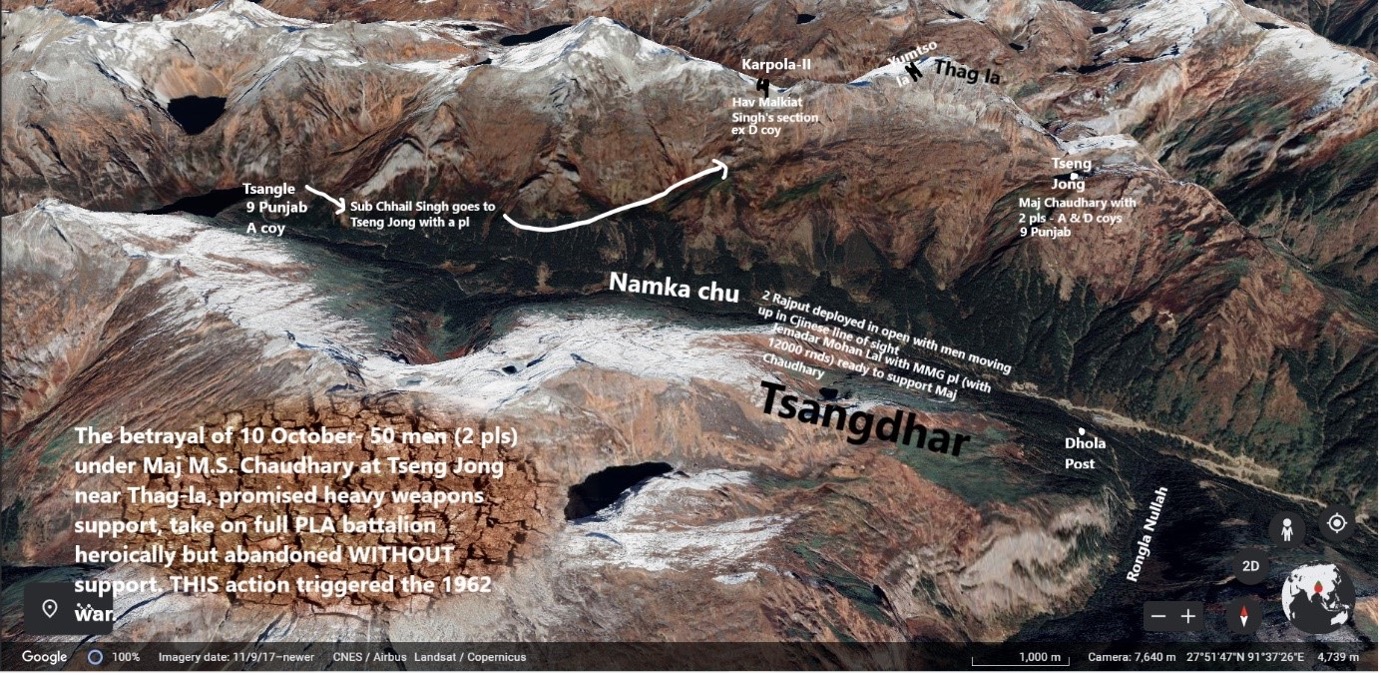
Now, let’s see some excerpts from my book and the references I used.
From “The 1962 India China War – What they don’t want you to know”:

From Wu Lengxi’s book “Shi nian lunzhan, 1956-1966, Zhong Su guanxi huiyilu (Ten-Year War of Words, 1956-1966, a Memoir of Sino-Soviet Relations)”:
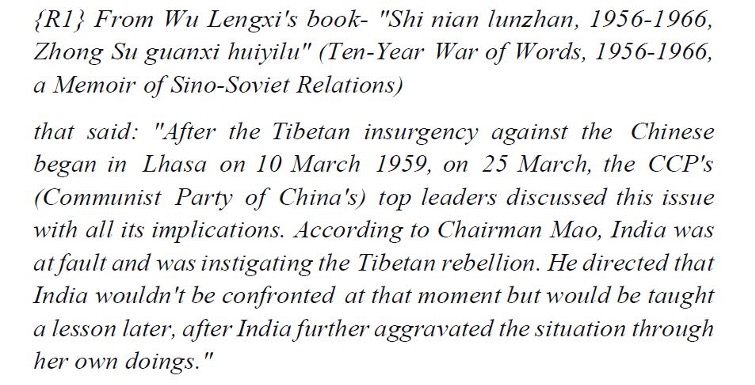
From John W Garver’s “China’s Decision for War with India in 1962”, page 56:

From John W Garver’s “China’s Decision for War with India in 1962”, page 57:

***
The general reader may have found it challenging to make sense of what is the upshot of all this. Let us summarize the debate for their benefit. So, here it is:
- Claude Arpi, a renowned scholar and researcher in the domain of India-China relationship and conflicts, published a blogpost some years ago. The blog claimed to summarize an article he had written in 2012, blaming the then top leadership of the Indian military and government of “foolishness” in handling the conflict with China (1962).
- My studies of documented evidence on the subject, have revealed the gross errors in Arpi’s (and many others’) conclusions and their misrepresentations of facts.
- This article has been an effort to put the record straight on this subject.
- The HBR reveals that AHQ had permitted eastern command (on the latter’s request) to patrol the McMahon Line, west-northwest of Tawang, between the iconic Khinzemane border post and the India-Bhutan-Tibet trijunction. The impetus behind this effort was militarily and politically valid.
- An officer from 1 Sikh (Capt Mahabir Prasad) had carried out the patrol under directions and guidance of the local brigade commander (Brig John Dalvi, 7 Infantry Brigade. Dalvi took credit for the same in his book). Prasad had set up a post at Tseng Jong pastures (Dhola post) going by his tactical and administrative judgment. This had nothing to do with either the AHQ or the “political leadership” (contrary to Arpi’s claim).
- Dalvi had sound reasons for doing what he did (as confirmed by retired officers from 1 Sikh on record here and here. If at all there were mistakes, they were made by the local command at brigade, division, and (Eastern) Army command level.
- Contrary to Arpi’s claim, the setting up of the Dhola post, on June 4, 1962, by itself was not China’s reason for attacking India, on October 20, 1962. Documentary evidence has been quoted here to show that Mao had made up his mind to attack India as early as 1959 (due to India’s support to the Tibetan insurgency). However, his immediate tactics in dealing with India’s “Forward Policy”, was one of “armed coexistence”. This entailed holding on to their positions and not backing down under aggressive Indian posturing without resorting to using firearms. The Indian operations towards Tseng Jong pastures, below Thag-la, on October 9–10, 1962, leading to actual kinetic contact (armed combat), was the trigger for China’s military offensive on October 20.
Finally, I would like to reiterate my respect for Claude Arpi for his scholarship and expertise on India-China matters. I would also have to record my surprise and sadness that he chose to follow the beaten track of mythmaking and misrepresentation, which, unfortunately, has been the standard fare vis-à-vis the 1962 India-China war.
Follow us on social media for quick updates, new photos, videos, and more
Twitter: https://twitter.com/indiasentinels
Facebook: https://facebook.com/indiasentinels
Instagram: https://instagram.com/indiasentinels
YouTube: https://youtube.com/indiasentinels
Disclaimer: The views expressed in the article are the author’s own and don’t necessarily reflect the views of India Sentinels.
© India Sentinels 2022-23


